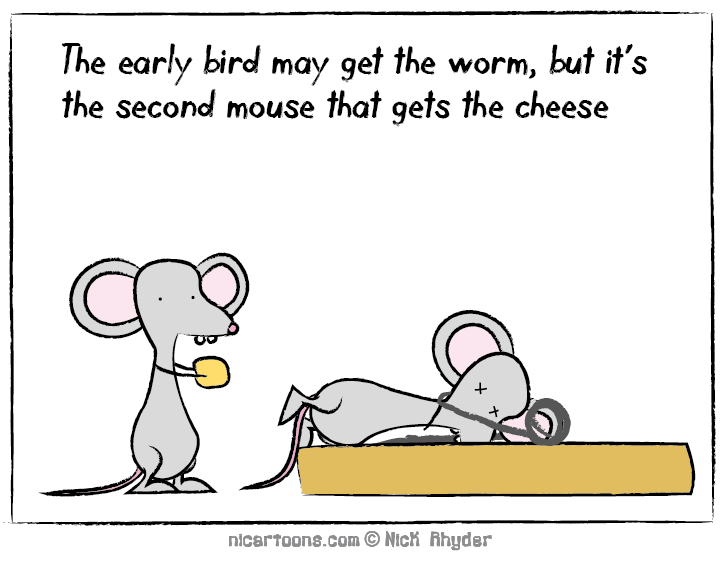
For many years after the introduction of the automobile, most industries benefited from somewhat static and predictable secular forces. Nascent technology forces primarily aided companies in increasing gross margins and operating margins by lowering the cost of labor, decreasing the cost of warehousing and decreasing logistical costs. Consumer behavior followed somewhat predictable and unchanged patterns, varying mostly with economic conditions and seasonal needs.
However, the advent of eCommerce and the “anything as a service” movement in the late 90's through early 2000's started to significantly change the behavior of individual and business consumers. Layer on logistics integrations that allowed near immediate gratification for non-service durable goods and consumers started to shift to purchasing from home. Similarly, businesses enjoy comparatively easy near-term gratification with the implementation of services; gone are the days of multi-year on-premises ERP implementations in favor of short-duration leasing of software as a service.
Late majority and laggard businesses within the technology life cycle were as late to identify these shifts in business and individual consumer behavior as they were to adopt new technical solutions. While they may have thrown up digital storefronts or offered digital downloads of their solutions, they failed to envision how the nascent forces begged for new integrations and tighter business cycles that would benefit not only the buyer but the producing company as well.
So, what is Digital Transformation? It is taking digital technologies and using them to provide new and creative ways to conduct business. This isn’t just an update to a technology stack or developing a new code. It is a transformation, via digitization, of how business is done.
In the mid 2000's Captcha was taking the internet by storm. It was designed to weed out bots and only allow humans through websites. It started out rather simply with a challenge of words or letters that required feedback that, at the time, would be difficult for a computer to detect. It met with great success, logging over half a million hours per day of people filling out captchas to access sites or submit information. Although not a digital transformation itself, what was coupled with captcha became a transformation.
The NY Times had digitized all of their old issues and used computer software to recognize the different images and convert to text. However, 10 to 30 percent of the text was still missed. This then required two humans to go through the unrecognized text and come to the same conclusion about what was shown. A lengthy and expensive process. Partnering with the captcha team, the NY Times put those unrecognized words at the end of captchas. There would be a normal captcha question (still designed to determine whether a bot or not) followed by a picture of text from the NY Times. Once the picture had been verified by enough people, that picture would then be associated with that text. Using this resource of over half a million man hours per day, the NY Times was able to quickly close the gap on unrecognized text from older issues. This generated an increase in business for captcha and solved a manual problem digitally.
Who uses Digital Transformation and Why?
Startups are created digitally. They have no infrastructure or code or business model that existed previously. Instead of transformation, startups are born digital. This gives them the opportunity to carve out a piece of the total addressable market currently not being serviced, or as a way to siphon off business from other companies currently operating in the market. By looking at what is already being done in the market and identifying the dissatisfaction within in, smart engineers can create a new product and a new business (if done appropriately, well-funded as well) that dramatically transforms a technology sector. Digitization can come easy to startups. The business already exists and trying to compete by doing the same thing will lead to failure. Taking an antiquated method and using digital prowess to transform it is what gives startups their edge.
If the current competitors in the market are paying attention, they can use this disruption to their advantage. Just like startups were able to glean information about where and how to target from larger corporations, those same corporations can now identify how to transform from the startups. It is not always easy creating a disruptive technology that requires a transformation for how business is done. By being a close follower, large corporations can avoid a lot of the pitfalls and ensure that they can keep their market share, while also now targeting new consumers. Conversely, if unwilling to adapt to changing forces, or unwilling to see the future for what it is, these corporations will be abandoned by their consumers.

Digital Transformation is Not...
...just taking a current generation technology and updating it.
...version control or the introduction of new hardware or software.
Digital Transformation requires a complete re-tooling of how you conduct business. It will affect how you code, how you scale, how you sell, how you brand and even how you interact as a company. A caterpillar doesn’t become a butterfly simply by slapping on some wings. Inside the cocoon it completely dissolves itself and rebuilds from the ground up. That is Digital Transformation.
Digital Transformation isn't easy. Marty Abbott has summed up 10 Principles that will assist you with your transformation. If you need further assistance with identifying Digital Transformation pitfalls and goals, AKF can help!